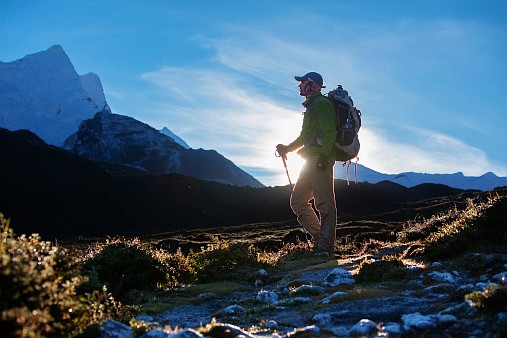Adventure travel can be a great way to explore the world and be active. Learning about your risks and preparing for your trip will help make your vacation a fun and safe adventure.
Introduction
"Adventure travel" is a type of tourism, often to remote locations, to explore and engage in physical activity. Adventure travel often includes "extreme" activities such as mountain climbing, exploring caves, bungee jumping, mountain biking, rafting, zip-lining, paragliding, and rock climbing.
This fast-growing travel trend is a popular way to see new places and test your physical abilities. However, these activities also present risks to your health and safety. Learning about these risks and preparing for your trip will help make your vacation a fun and safe adventure.
Risks of Adventure Travel
Adventure activities, both at home and abroad, carry some risk of injury. Because this type of international tourism often involves travel to remote locations, additional adventure travel risks include the lack of quick emergency response if injured, poor trauma care, and unexpected weather changes that can make safety challenging and rescue efforts more difficult. Remember that general outdoor risks, such as sunburn and bug bites, apply to adventure travel as well. But most adventure activities can be fun, exciting, and safe if you prepare for your trip and follow good safety practices.
Also be aware that if you are injured during your trip, your health insurance may not cover health care you receive while abroad. You can buy travel health and evacuation insurance to fill this gap.
What You Can Do
Adventure travelers, take these steps to prepare for and stay safe during your vacation:
- Make an appointment with a doctor, ideally at least 4–6 weeks before the trip, to get any recommended vaccinations and medical advice. Be sure to talk to the doctor about your planned adventure activities in case there are special recommendations for you.
- Train properly for your trip. Many adventure tours can be physically demanding, so it is important to be fit before your vacation.
- Check with your regular health insurance company to see if your policy will cover any medical care you might need in another country. If not, consider buying travel health and evacuation insurance.
- Look for gaps in your insurance coverage. For example, your health insurance might not cover medical evacuation if you cannot receive needed treatment where you are. Evacuation by air ambulance can cost more than $100,000 and must be paid in advance by people who do not have insurance. You can buy medical evacuation insurance to be sure you will have access to emergency care.
- Evacuation companies often have better resources and experience in some parts of the world than others; travelers may want to ask about a company's resources in a given area before purchase, especially if planning a trip to remote destinations.
- Use a reputable outfitter. Look for a company that has been in business for several years, has a current operating license, and is a member of relevant professional associations such as the local board of tourism. Ask for references and don't be afraid to ask questions!
- Wear protective gear when doing adventure activities and follow safety instructions from your adventure guides.
- Don't drink alcohol before or during outdoor activities.
- Eat and drink regularly to stay hydrated and rest if you feel overheated.
- Avoid too much sun exposure by using sunscreen, wearing protective clothing, and seeking shade.
- Wear bug spray while outdoors to avoid bites from mosquitoes, ticks, and other insects.
- Consider bringing a first aid kit. A number of companies produce advanced medical kits and will customize kits based on specific travel needs.





